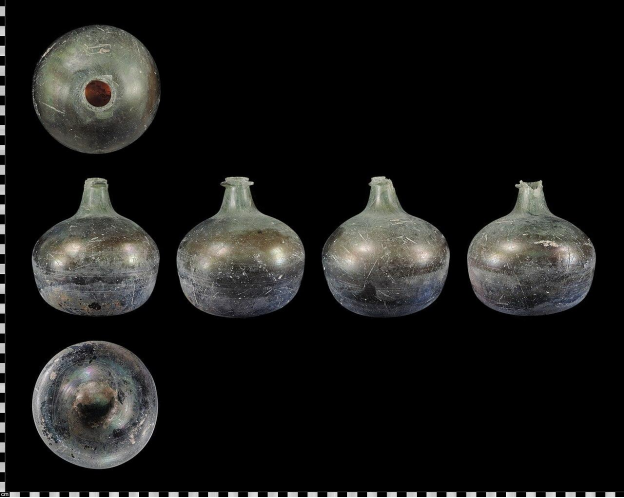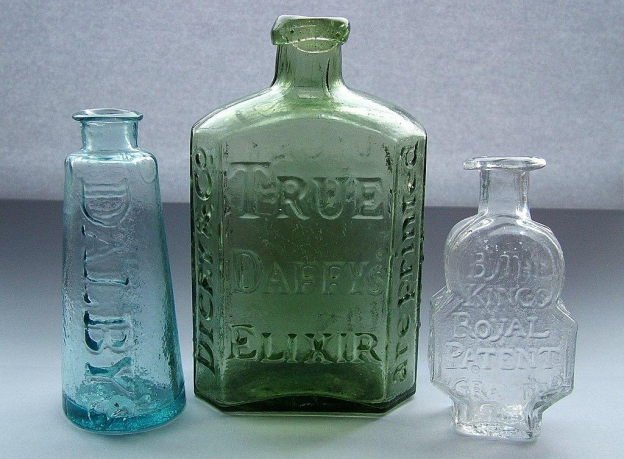INTRODUCTION
Glass bottles have a very long history. From being used to throw letters in the sea by the pirates to the storage of perfumes and medicines, they have been used in every era. From the perfume bottles on your dressing table to those beautiful spice jars in your pantry.
It is part of your life. Probably, this is the reason that the determination of the age of glass bottles is considered to be a valuable skill.
Like solving a historical puzzle, determining the age of a glass bottle is an interesting yet challenging task.
In this blog, we explore the various ways to determine the age of old glass bottles and discover why this skill is so important. So, if you have the hobby of collecting glass bottles or you are an archaeologist, then this blog is for you.
THE PURPOSE OF DATING GLASS BOTTLES
You might be thinking, why is the age determination of glass bottles so important? Certain perspectives drive a major purpose behind the age determination of glass bottles. Some of them are listed below:
- Archaeological Importance
Old bottles are of significant importance to the archaeologists. Archaeologists study the different shapes and chemical compositions of old bottles. They use this information to trace them back to the archaeological deposits from where they were found.
- Collector’s Value
For collectors, the age of old glass bottles is very important. The older the bottle, the greater its value is. Therefore, they are always keen to know the age of glass bottles. This is why bottle collectors are always searching for old glass bottles.
- Ecological Importance
Glass bottles are an important component of landfill waste. Therefore, by analyzing the history of a particular glass bottle production one can gain important information about how different manufacturing types influenced their environment.
CHARACTERISTICS TO LOOK FOR WHEN DETERMINING THE AGE OF GLASS BOTTLES
Although the age determination of glass bottles is a rabbit hole with some identification hints and expertise, it can still be determined. Let’s study some important characteristics that help us trace the age of old glass bottles.
- Emboss
Some glass bottles might have numbers or letters embossed on the sides or bottom. For any expert, identification of age of glass bottle is very easy by just looking at the embossed numbers or letters.
Do you know which old bottle is a real collector’s item?
A bottle in perfect condition without any chips, stains or cracks and embossed markings at the bottom that have turned into a deep, lustrous color. Such valuable old glass bottle markings have a very high value.
Some glass bottles might have readable labels or stoppers that can help determine their age.
- Pontil
The bottom of the base of the glass bottle tells most clearly about its age. Before the 19th Century, all glass bottles had pontil marks at their bottom. These pontil marks were considered a signature.
This pontil mark was left during the manufacturing process. At that time, an iron rod was used to hold the glass bottles during manufacturing. The pontil resulted from that iron rod and hence easily identifiable in determining the glass bottle’s age.
- Seams
When glass bottles were produced using mold-sourced production, they had a hard-to-see seam in the glass. This seam was the result of the bottle’s removal from the mold. The height of the mold seam indicates the age of the old glass bottle. Between the era of 1905-1920 glass bottles had thicker and higher seams.
With the advancement in technology, the mold seams became thinner. The machine-made bottles in the later era had a mild thickness to as thin as human hair.
- Bottle Markings on Bottom
Bottle markings on the bottom indicate the age of glass bottles. These marks are known as maker’s marks. These include trademarks, brand names and other identification marks.
Suppose the maker’s mark is identifiable and the maker is well known. In that case, it becomes very easy to determine the age of the bottle. The reason is that the bottle’s age can be traced back to its production.

USING COLOR TO DETERMINE THE AGE OF GLASS BOTTLES
Although bottle color seems to be a simple trait, it can be very useful in determining the age of the glass bottle. Let’s have a look at how different colors define different manufacturing times of glass bottles:
- Clear Glass Bottles
Manufacturing clear or colorless glass bottles was very desirable in the early era. Until the 1870s, it was very rare to produce clear glass bottles.
Do you know why?
It is because glass has a slightly greenish cast in it. This greenish cast is because of iron impurities in it. It requires high-quality materials or de-colorizing agents to decolor the glass.
Until 1870, such de-colorizing agents were uncommon, and technology wasn’t that advanced; hence, the bottles produced were unclear.
Clearer bottles became common after the advent of machine-made bottles.
- Bottle Green or Natural Glass Bottles
Before the 1870’s era, glass bottles were mostly made from sand. Since sand has low iron content, no de-colorizing agents were used; therefore, green-colored bottles were produced. These bottles are termed as bottle green or natural glass bottles.
- Lavender Glass Bottles
The 15th Century is considered the beginning of the era of clear glass bottles. It was when the Venetians discovered that a slight addition of manganese could result in clear glass bottles. Although not completely clear, the bottles had a slight lavender tint.
When exposed to light, these bottles show a purplish tint in them. This is because the manganese, when exposed to light, becomes solarized.
Any bottle that shows this lavender or purplish tint can be aged back to 1870 and World War 1. However, during World War 1, manganese was no longer used in glass production. Instead, it was used in the production of hardened steel.
- Aqua Glass Bottles
The beautiful-looking aqua-colored bottles result from a natural reaction between sand, iron and oxygen content during manufacturing. The aqua glass is used to preserve a lot of substances and liquids, including medicines, ink, soda and mineral water. It is also used to make fruit jars.
After 1920, aqua glass bottles were rarely seen; clear glass bottles were preferred because the contents became more visible.

Conclusion
Determining the age of glass bottles is a science. However, it is important from historical, archaeological and ecological perspectives. Whether it is the typology of glass bottles, their color or the glass composition, every characteristic is important. Thus, the significance of the determination of age of glass bottles cannot be ignored.

